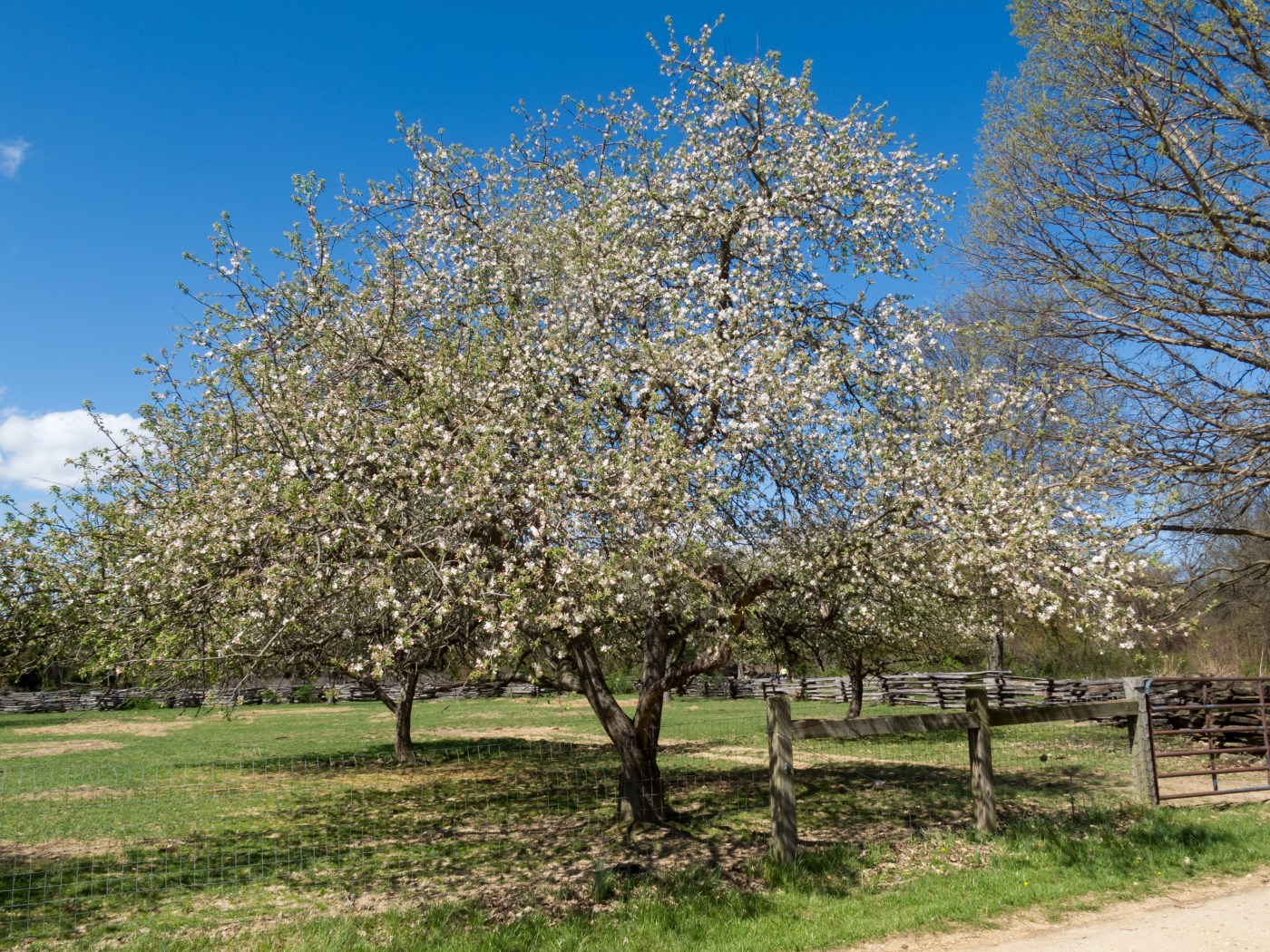
[Baltimore Sun] Garden Q&A: Why is my apple tree not fruiting?
Q: I moved into a home a couple of years ago with an apple tree, and it’s never produced fruit. What can I do to get it to fruit?
A: If the yard only has one apple tree, one of my first suspects is the lack of a suitable pollinator. Some apple cultivars can fruit by themselves, but most require cross-pollination with another apple tree of a different cultivar. Perhaps the prior resident didn’t plant one, it died and was taken out before you moved in, or a neighbor’s tree that sufficed as a pollen source is similarly no longer around.
Other causes could be pruning branches too heavily or at the wrong time of year, which would remove the flower buds, poor tree health, and lack of sufficient sunlight. Fruit trees need full sun (a minimum of 6-8 hours of direct summer sun) to grow and produce well.
We recently revised many of our fruit web pages with growing and troubleshooting tips. You can learn more about growing apples at home by visiting the page Growing Apple and Pear Trees in a Home Garden, which includes a list of some recommended cultivars if you need (or want) to add a second tree.
Q: I keep hearing about those red-eyed cicadas in Maryland this year. Didn’t we just have those? I thought we wouldn’t see them again for over a decade.
A: Yeah, this has been blown out of proportion. Only a fraction of St. Mary’s County will experience some periodical cicada emergence this year. (That will be part of Brood XIX, which emerges every 13 years.) The vast majority of this year’s periodical cicada emergence will take place outside of Maryland. Brood X, the big brood in Maryland that we saw back in 2021, won’t appear for us again until 2038.
You may be thinking, “But I hear cicadas every year.” Indeed, we do. The species that emerge yearly are the “dog-day” or “annual” cicadas. Technically, they don’t have a one-year life cycle, as the word “annual” might imply, but they need only a handful of years to mature, unlike the longer-lived periodical species. Thus, we see a batch of them every year, even though those individuals are a few years old by the time they reach adulthood. Overlapping generations of those annual cicadas ensure their presence every summer.
University of Maryland Extension’s Home and Garden Information Center offers free gardening and pest information at extension.umd.edu/hgic. Click “Ask Extension” to send questions and photos.
